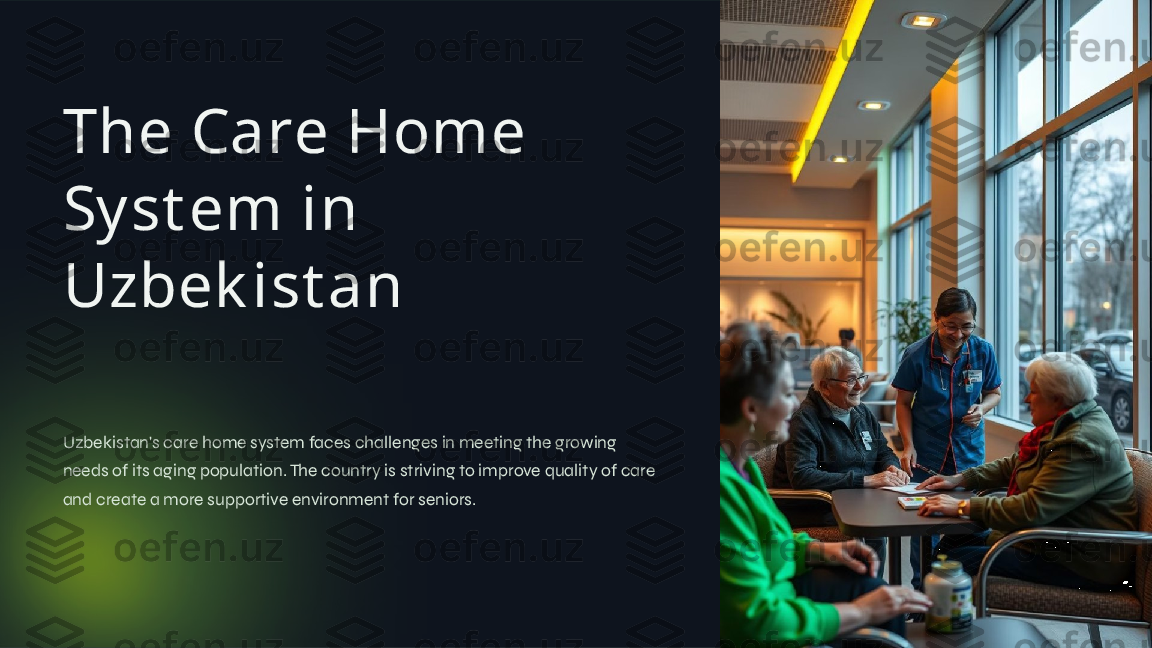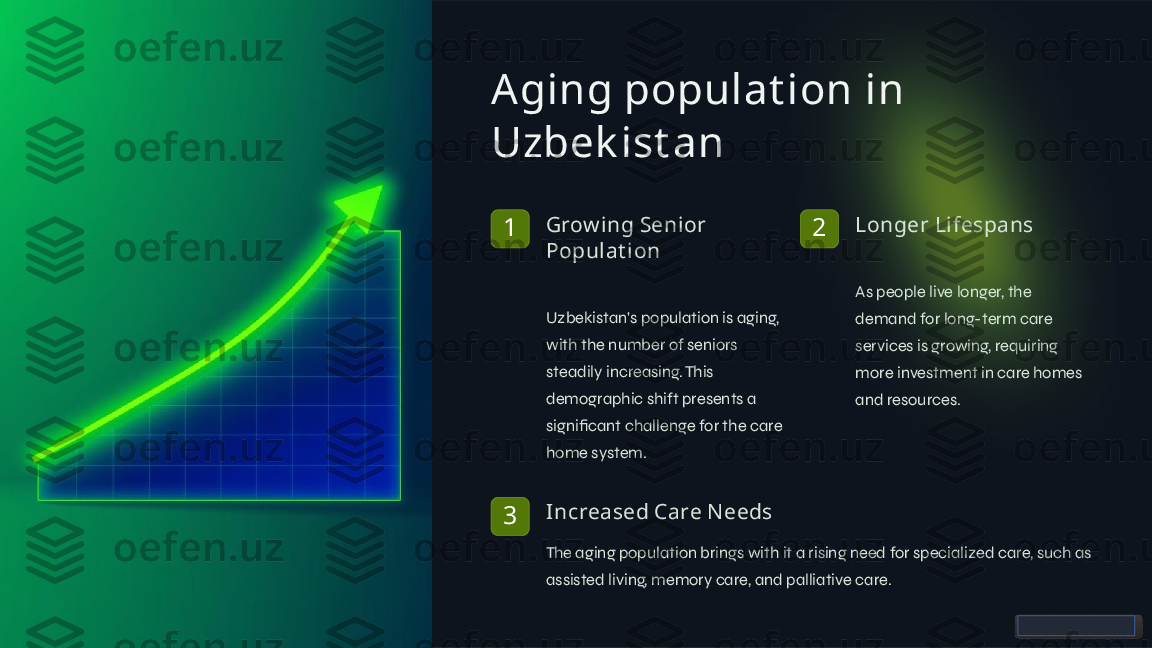The Care Home System in Uzbekistan










The Care Home Sy st em in Uzbek ist an Uzbekistan's care home system faces challenges in meeting the growing needs of its aging population. The country is striving to improve quality of care and create a more supportive environment for seniors.
Aging populat ion in Uzbek ist an 1 Grow ing Senior Populat ion Uzbekistan's population is aging, with the number of seniors steadily increasing. This demographic shift presents a significant challenge for the care home system. 2 Longer Lifespans As people live longer, the demand for long-term care services is growing, requiring more investment in care homes and resources. 3 Increased Care N eeds The aging population brings with it a rising need for specialized care, such as assisted living, memory care, and palliative care.
Current st at e of care homes Infrast ruct ure Care homes in Uzbekistan vary in quality, with some facilities offering adequate accommodations and others facing challenges in terms of infrastructure and resources. St affi ng The availability of trained and qualified caregivers is a concern, particularly in rural areas. Insufficient staffing can lead to inadequate care for residents. Serv ices The range of services provided by care homes varies, with some offering basic care while others provide specialized services, such as rehabilitation or dementia care.
Challenges faced by t he care home sy st em Fi nancial Const raint s Funding for care homes is often limited, leading to insufficient resources and inadequate staff training. This can impact the quality of care provided. Lack of Qual ifi ed St aff There is a shortage of trained caregivers, especially in rural areas. This can compromise the quality of care and resident safety. Limit ed Resources Care homes often lack essential resources, such as medical equipment, rehabilitation facilities, and specialized programs for residents with specific needs. Regulat ory Challenges Regulations governing care homes may need improvement to ensure quality standards and accountability. This includes licensing, inspection, and staff qualifications.
Gov ernment init iat iv es and policies 1 Inv est ment in Infrast ruct ure The government has pledged investments to improve care home infrastructure, including building new facilities and upgrading existing ones. 2 St aff Training Programs The government is promoting training programs for caregivers, aiming to enhance their skills and knowledge in providing quality care. 3 Financial Incent iv es The government is exploring financial incentives for individuals or families who contribute to the care of elderly relatives. 4 Public A w areness Campaigns The government is conducting public awareness campaigns to educate the public about the importance of elder care and the benefits of care home services.
